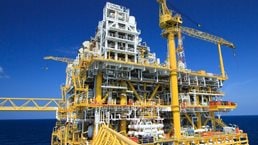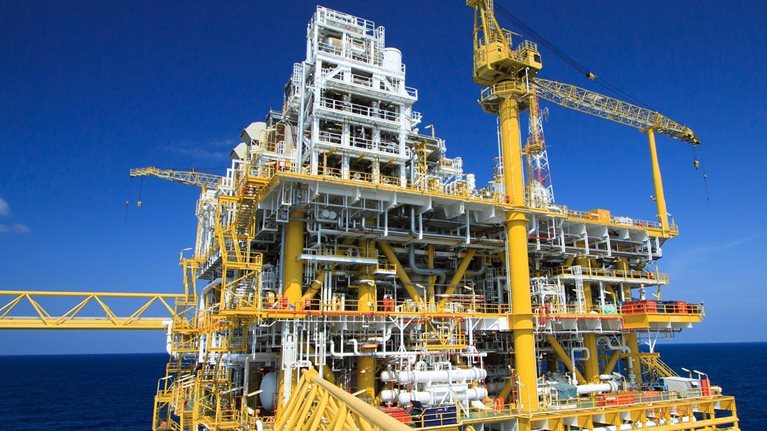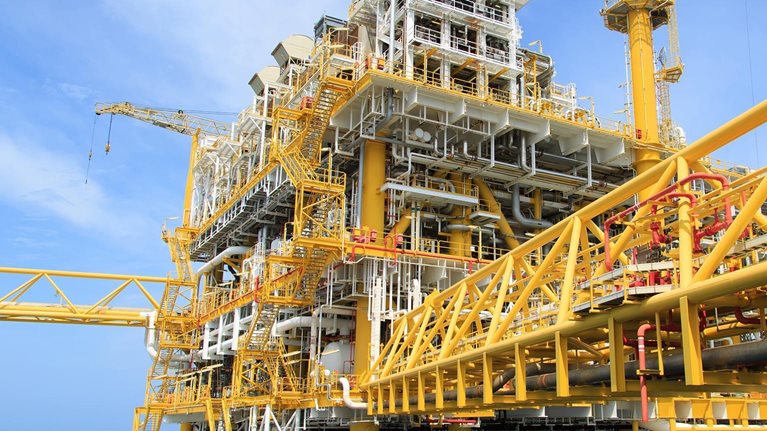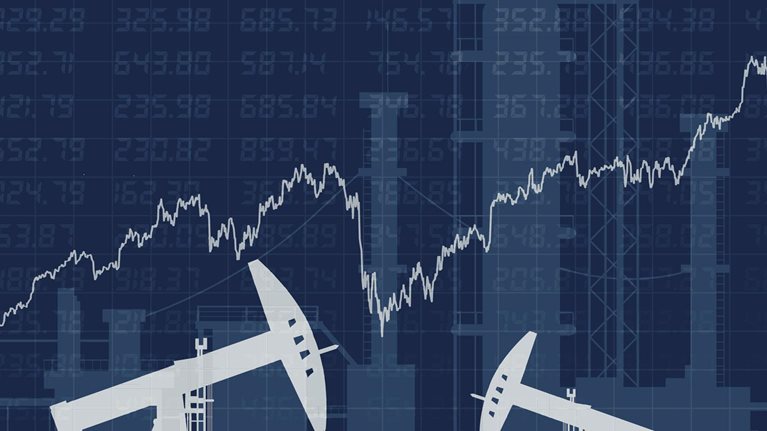From 2014 to 2016, oil and gas producers aggressively slashed capital expenditure budgets, bringing drilling activity to a fraction of what it was at its peak. While their initial efforts focused largely on commercial gains via negotiations with suppliers (labor costs, equipment, and materials), many producers also captured the additional opportunity to reset their costs per well through a combination of specification optimization and demand management initiatives. These additional efforts created a new normal, with leaders reducing well costs by more than 50 percent in both onshore and deepwater developments. Substantial portions of these reductions should be sustainable in any market environment as they go far beyond margin-driven price cuts (Exhibit 1).

The break-even cost for new wells has come down significantly, and today there are many more well targets that are economically viable at or below $50 per barrel. Indeed, many producers already have announced a substantial increase in onshore and deepwater developments that are viable at $40 to $50 per barrel. In general the global cost curve has structurally shifted down by 20 to 30 percent. Of course, costs vary by and within basins, but a common theme has emerged over the past two years: efficiency has created opportunities for producers that know how to maintain it (Exhibit 2).

Oil-field service and equipment (OFSE) players also have improved their cost base and will be working to maintain their current cost levels. Producers will need to distinguish between price increases driven by justifiable factors, and those driven by producers’ increased willingness to pay as oil prices rise; in doing so they can determine whether to collaborate with suppliers to streamline the total system, or to fight price creep.
Stay current on your favorite topics
The risk in price recoveries is that substantial cost inflation, partially justified but partially due to a lack of focus, can occur as the value of a barrel rises. In the extreme example, between 2006 and 2008 upstream capital costs rose by up to 80 percent according to the IHS Upstream Capital Cost Index. With increased prices focus shifts to the much higher value of an incremental barrel causing a relaxation on specification standards and demand management.
This creep up in specification and demand is as much to blame as service prices for these cost increases. We believe efficient and safe production can be achieved, and is actually enhanced by, a tighter discipline on the drivers of cost.
We have already seen a relative rise in drilling activity from 2016 lows, with targeted shortages in several micromarkets (for example, the pressure pumping market in the Permian). However, when you compare rig count and completions levels thus far versus 2014 peaks, we are still 50 to 60 percent below those levels. Additionally, even with a steady climb of oil price past the $65 to $75 per barrel range, efficiencies gained in drilling durations and completions may keep the US onshore market from reaching similar levels of activity, as judged by pure services count, until 2020 or beyond (Exhibit 3).

The basic requirements for every producer still revolve around having resources in the right rocks, access to markets, and the right technologies in place. However, an ability to lock in the cost improvements producers achieved over the last several years will be a source of competitive advantage. To do that while riding an upturn, and preserving relationships with suppliers, will require the same razor-sharp focus on profitability and efficiency that the downturn fostered. Companies can maintain that focus by establishing a rigorous and digitally enabled fact base, and continuing to focus on value.
Companies that do so will capture rents that exceed those of marginal producers, and earn the right to increase production from their more economically viable reserves. Building on the momentum of the past two-plus years, we see several opportunities to lock in cost reductions (Exhibit 4).

Three opportunities to ‘lock in’ achieved gains and navigate the upturn with confidence
1. Use of big data can help defend a strong commercial position
Commercial savings make up approximately 50 percent of the cost improvements companies realized during the downturn. But these are the first to disappear as suppliers look to regain more sustainable levels of profitability, and often have more information about costs than producers, giving them an advantage in price renegotiations. Also, as utilization rises into the more than 65 percent range for many services, producers may fear they will not be able to obtain quality crews, even as their suppliers’ real labor costs increase (including hiring and training).
Would you like to learn more about our Oil & Gas Practice?
While these are all serious challenges, producers can negotiate more effectively if they can ensure that supplier price increases are based on their real costs, and if they can implement performance incentives with a substantial upside to OFSE’s when they deploy better crews.
With a deep understanding of equipment and services cost structures (for example, a detailed “clean-sheet” model), producers (and OFSE’s) can build a picture of the true cost drivers for each major category procured, and monitor them through indices. While not perfect, this approach can provide producers with enough confidence to know if the cost to the supplier, in fact, has increased, and by what approximate amount, thereby providing common ground for price negotiations. Many producers who maximized gains, had built and maintained similar models through rigorous internal and external efforts. There is a real opportunity today to build digitally driven clean-sheet models that would enable producers to understand a given supplier’s cost structure, and how it has evolved over time. This can inform the producer’s responses to supplier price increase requests as the market picks up.
Additionally, several producers have successfully developed creative price structures that reward suppliers for top tier performance in categories such as rig operations, directional drilling, and fluid and cementing services. Designing effective incentives (and disincentives) for suppliers promotes the deployment of crews that can earn differentiated returns (Exhibit 5).

2. Maintain value-focus and standards in specification decisions while still pushing for innovation
Specification has been an area of great improvement during the downturn. Innovation blossomed during the growth period between 2011 and 2014 as engineers and suppliers experimented to find the right approach for each field and well. As the technologies developed, along with producers’ understanding of their costs and benefits, producers could begin implementing standardized approaches, as opposed to running a wide variety of tailored solutions with their subsequent costs and delays. The downturn provided a perfect opportunity to push the limits of standardization and specification reductions, with many producers achieving new ways of collaboration between technical functions, procurement, and asset teams that are required to retrieve maximum value.
As field activity increases, companies will need strong governance in place to protect the value they realized via standardization and the redesign of wells and services. Deviating from a standard design should be fully vetted via an appropriate exception process, and considered only if the incremental benefit outweighs the added system cost. While higher oil prices will change the assumptions in this value equation, the rigorous approaches taken to date in driving the most effective (and safe) designs must be maintained. This is not to discourage innovation. It should, however, be monitored to avoid the costs associated with upselling in the field, and the fragmentation of a company’s product and supplier base.
Specification optimization example: Defining standards in fluids and cementing services
In 2015, a company kicked off a program to select standard packages for fluids and cement jobs, focusing on efficiency without sacrificing quality or safety. Up to that point, jobs were bid on a well by well basis, with an open “price book” approach, and there was great variability in the cost and quality of each job. There also was substantial upselling in the field. But analysis showed that while there was a substantial variation in cement job design, there was little correlation between design and well performance (Exhibit 6).

The producer organized a cross-functional team to define a more standardized approach to cementing. The goal was to find an “all-in” price structure with enough flexibility to account for a majority of their well activities. After the initiative, five well archetypes were selected, and the company issued an RFP to select the top suppliers for each archetype, with a fully inclusive dollar per barrel of slurry pricing model (Exhibit 7).

This approach led to a true all-in cost and value-focused approach to slurry design (maintaining strict standards for quality and safety) that simplified invoicing, limited the opportunities for service providers to upsell in the field, and improved the company’s ability to compare performance between jobs. This created transparency and drove accountability. It also reduced cost in the category by 20 percent.
To lock in these benefits, the company set up a process that requires prior approval for any assignment outside of the selected suppliers or archetypes. In parallel, the company developed a business case to test a new type of cement in development wells, which improved value and was adopted across the organization. This two-pronged approach incentivizes the field staff and the service provider to select a standard product (if one is available) without stifling innovation. Furthermore, reducing engineering design requirements can streamline the design process and reduce total design time.
3. Expand focus on removing waste from the system and improving efficiency of products and services
Demand-for-service costs were reduced during the downturn by rationalizing both products and services, applying lean principles internally, and working with suppliers to streamline interactions. Improving performance begins by understanding a service’s value drivers, as well as current performance variance and embedded waste in the category across vendors. Once that variance is understood, action can be taken to maximize value, for example by switching suppliers based on their total delivered cost (beyond price), changing price structures and incentives, or by modifying operating model designs, up to and including better sharing, scheduling, planning, and even bringing parts of services in-house.

Preserving the downturn’s upside
Additionally, should activity continue to increase and prices climb, it will be vital for producers to gain access to the data they need to fully evaluate and manage demand and operations. A smartly structured “spend cube” approach to internal data management, enabled by the latest cloud-based solutions, can provide a deep fact base for quickly identifying supply-chain opportunities. And if regular data pulls and analysis can be automated, stakeholders will be able to keep their focus on value. This will be critical if the oil price continues to rise and demand returns, as efficient access to data removes a barrier to analysis as the focus shifts toward minimizing time to first production.
Demand management example: Squeezing out waste in water
After seeing a 30 percent year-over-year increase in its onshore water management costs, one North American producer targeted its trucking costs. The producer’s supplier portfolio was broad (as is common in the industry)—a mix of very small and medium-sized trucking companies. This made it difficult to monitor performance in the field, especially given the geographic breadth of the producer’s operation. A performance analysis of core metrics showed substantial variance, with total water trucking cost per barrel varying by three to four times for the same wells. A further analysis of submetrics (hours per trip, barrels per trip) showed similar variance (Exhibit 8).

To address the issues beneath the variance, the client took several steps. First, by understanding which suppliers performed best, and combining that with a “clean-sheet” knowledge of the cost-to-serve, the company whittled its suppliers down from over 20 to fewer than 10. Second, it shifted its payment policy to a dollar-per-barrel price structure, removing any incentive for suppliers to make a job take longer than it should. (It also included disincentives for safety violations.) Lastly, it reorganized its internal water management planning processes to implement central dispatch and predictive planning tied to drilling schedules. This substantially decreased expensive, expedited trucking (“hot shots”), increased the percentage of full truck loads, and allowed for more sustainable monitoring.
For the most part, the concepts described in this article are not new. In previous recoveries there have been similar opportunities to preserve the savings retrieved in the prior downturn. Unfortunately, those opportunities largely have been missed given the substantial price increases in the upturn. Rising oil prices can distract companies from the difficult work of supply-chain and value-led analyses of supplier performance, seduce them from making specification decisions, and make it hard to adhere to lean operational models. When prices rise, production once again becomes king, power shifts back to suppliers, and costs creep back in without justification.
It is the authors’ belief that the strategies and tactics we have described are possible and prudent to adopt for many producers, both onshore and offshore. What is required is focus and discipline, and to have a robust fact base in place before activity comes all the way back and markets tighten. Furthermore, if new and advanced digital tools and techniques are added to the fantastic cost-focused momentum and grass-roots initiatives many producers have launched in the past several years, we believe the industry can build a sustainable base for ongoing value delivery in any environment. Producers that move early and quickly will be better positioned for an upcoming recovery, and much more likely to win in the long run.


